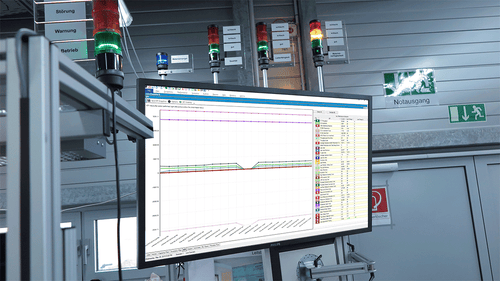
Reducing Downtime Through Predictive Scheduling in Multi-Line Operation
In today’s hypercompetitive industrial manufacturing environment, every minute of production counts. For plant managers overseeing multi-line operations, unplanned downtime is more than just an inconvenience—it’s a profit drain, a reputation risk, and a customer satisfaction threat. While traditional maintenance practices and manual scheduling systems can only go so far, a new frontier is reshaping operational resilience: predictive scheduling powered by advanced planning and scheduling (APS) systems.
By integrating PlanetTogether APS with enterprise platforms like SAP, Oracle, Microsoft, Kinaxis, or Aveva, industrial manufacturers can move beyond reactive firefighting into a world of proactive, data-driven decision-making. This integration isn’t just a technological upgrade—it’s a strategic shift that enables plant managers to reduce downtime, maximize asset utilization, and ensure smooth coordination across multiple production lines.
Let’s explore how predictive scheduling transforms multi-line operations and why it’s becoming indispensable for modern industrial manufacturing.
The Challenge: Complexity in Multi-Line Operations
Running a single production line is already a sophisticated balancing act. Managing multiple parallel lines, each with different products, changeover requirements, maintenance needs, and workforce allocations, multiplies that complexity exponentially.
Common challenges faced by plant managers in multi-line setups include:
Unplanned downtime due to machine failure
Inefficient changeovers between products
Overlapping maintenance schedules causing cascading delays
Lack of visibility into material availability across lines
Difficulty in balancing production priorities when demand shifts
Traditional scheduling tools, often limited to spreadsheets or ERP add-ons, provide a static view of operations. They can’t keep pace with the dynamic, real-time environment of modern factories where every shift, every minute, and every machine matters.

Predictive Scheduling: What It Means
Predictive scheduling takes industrial planning to the next level by using advanced algorithms, real-time data, and historical trends to anticipate issues before they occur. Rather than simply reacting to machine breakdowns or material shortages, predictive scheduling:
Analyzes patterns of equipment wear and usage
Incorporates preventive maintenance windows directly into the schedule
Simulates multiple “what-if” production scenarios
Prioritizes production runs based on delivery deadlines, profitability, or resource constraints
Dynamically adjusts schedules as new disruptions or opportunities arise
The result? Plant managers can orchestrate multi-line operations with foresight, ensuring minimal disruption even when the unexpected happens.


How PlanetTogether APS Drives Predictive Scheduling
PlanetTogether’s APS platform is specifically designed to handle the complexities of multi-line, multi-product manufacturing. Its integration with systems like SAP, Oracle, Microsoft Dynamics, Kinaxis RapidResponse, or Aveva Manufacturing Execution Systems (MES) provides a unified operational picture, pulling in data from every corner of the enterprise.
Here’s how it works:
Real-Time Data Integration:
With ERP and MES integration, PlanetTogether draws from live data streams—equipment status, inventory levels, order priorities, and workforce availability—to maintain an up-to-date production schedule.
Predictive Analytics Engine:
Leveraging machine learning and historical data, PlanetTogether identifies patterns that typically precede downtime. For example, if a particular machine has shown increased failure rates after 500 operating hours, the system proactively schedules maintenance before issues arise.
Dynamic Rescheduling:
When an unplanned event occurs—like a sudden rush order or a supplier delay—PlanetTogether’s dynamic rescheduling tools allow the plant manager to simulate adjustments across all lines, identifying the optimal solution that minimizes disruption.
Optimized Changeovers:
Multi-line operations often face significant downtime during product changeovers. PlanetTogether sequences jobs not just by priority, but also by minimizing changeover times, reducing idle machine hours.
Cross-Line Coordination:
With full visibility across all production lines, plant managers can balance capacity loads, shift resources between lines, and avoid bottlenecks—something static systems simply can’t do.
Tangible Benefits: Reducing Downtime and Elevating Performance
When predictive scheduling is fully deployed, the benefits cascade across the entire operation:
Reduced Unplanned Downtime:
By integrating predictive maintenance directly into the schedule, machines are serviced before failure, avoiding costly emergency stops.
Improved On-Time Delivery:
With proactive visibility into production risks, plant managers can ensure customer orders stay on track even when disruptions hit.
Higher Equipment Utilization:
By synchronizing schedules across lines and optimizing changeovers, more time is spent producing and less time is lost to setup or idle states.
Better Workforce Management:
Predictive scheduling highlights labor requirements ahead of time, allowing for smarter shift planning and reduced overtime costs.
Increased Agility:
With PlanetTogether’s integration to ERP and MES platforms, plant managers can pivot faster in response to market changes, supply disruptions, or new customer demands.
Preparing Your Plant for Predictive Scheduling
As a plant manager, you play a pivotal role in preparing your facility to embrace predictive scheduling. Here’s how to get started:
Assess Your Current Data Infrastructure:
Ensure you have reliable, clean data streams coming from your ERP, MES, and equipment sensors. Integration works only as well as the data feeding it.
Engage Cross-Functional Teams:
Predictive scheduling affects maintenance, production, supply chain, and IT teams. Bring them together early to align goals and expectations.
Select the Right APS Platform:
Choose a system like PlanetTogether that offers proven integration with your existing enterprise stack (SAP, Oracle, Microsoft, Kinaxis, Aveva) and has experience in multi-line industrial environments.
Pilot and Scale:
Start with one production line or one product family. Test predictive scheduling in a controlled environment, gather learnings, and then scale across the plant.
Build a Culture of Proactivity:
Predictive tools are only as effective as the people using them. Train your teams to think ahead, interpret system insights, and take proactive action.
Predictive scheduling is not just a passing trend—it’s a fundamental shift toward smarter, leaner, and more resilient manufacturing. As industrial plants face rising demand variability, supply chain disruptions, and escalating cost pressures, the ability to anticipate problems and adjust in real time becomes a key competitive advantage.
For plant managers, integrating PlanetTogether APS with core enterprise systems transforms scheduling from a manual burden into a strategic tool. By reducing downtime, improving throughput, and increasing responsiveness, predictive scheduling enables you to unlock new levels of operational excellence—all while positioning your plant for the challenges and opportunities of tomorrow.
Are you ready to take your manufacturing operations to the next level? Contact us today to learn more about how PlanetTogether can help you achieve your goals and drive success in your industry.


